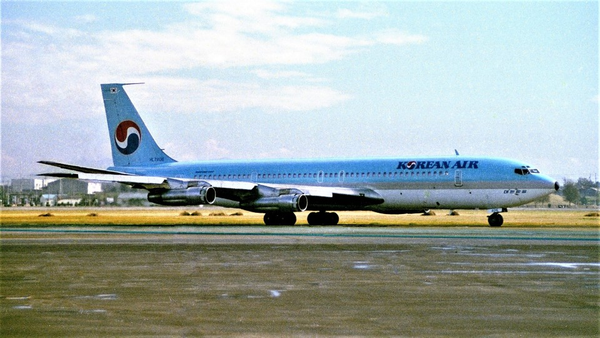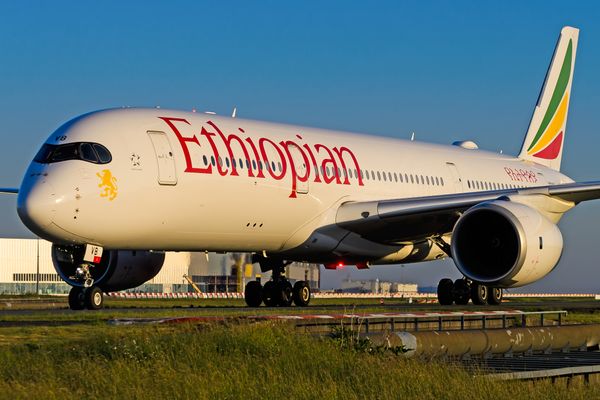Recently, we published an article on how the air traffic controller (ATC) crisis has become a problem in America. Controller shortages and longer hours have made the job increasingly demanding for those who go into the profession. The situation is becoming more pronounced but is not particularly global.

That said, recent accidents - namely the collision of Japan Airlines 516 and a DHC Dash-8 - have increased scrutiny of air traffic control decisions involving human communication. This is to say that there have been calls for, and possibly a need for, ATC to be phased into a system of artificial intelligence in the future to safeguard the aviation industry's safety.
ATC is a particularly niche industry in that it is high-paying compared to other professions but requires employees to be very well-trained and highly skilled in communication. In that sense, it is not a job for everyone and is extremely context-based. Those who control the skies must have elevated levels of situational awareness and be focused for extended periods. No doubt AI can manage a variety of inputs at once, but for AI to work, it must possess a level of expertise currently only possessed by humans.

Conversely, the problems seeping into the industry, at least within America, are distinctly human challenges. Higher stress levels and poor sleep quality can greatly influence the decision-making abilities of human controllers, but AI would be immune to mental and physical health challenges. AI would also relieve the economic burden of paying controllers. Most controllers make over six figures a year, and downsizing control infrastructure and staff can help save airport operators large sums of money.
There are real-world examples of airports not being controlled by humans in the tower for this purpose. Scandinavian Mountains Airport (SCR) became the first airport to be controlled via a remote computer when it opened in December 2019. While the concept is far from the level of AI replacement, virtual towers have been gaining traction to control small airports and uncrowded airspaces without being on-site.

Ultimately, AI will likely struggle to fully replace human controllers, given the pendulum of changing events at an airport daily. In emergencies where extreme skill is required by controllers to stack planes correctly at holding patterns or to align planes perfectly on approach or the tarmac, it will be difficult for AI to acquire that level of precision. Undoubtedly, it is possible, but it will take time and extensive testing at smaller airports.
Controllers should not worry about AI taking over their jobs. Admittedly, introducing AI into ATC could reduce controllers' current burden if AI can manage certain tasks and reduce controllers' workload. One-on-one conversations likely will require human intervention, but AI can still assist in monitoring, creating visual aids, etc. We are still years from this reality, but we can expect ATC to change as aviation changes and improves.
Delta Sets Firm October 2026 Launch for Historic Atlanta–Riyadh A350 Service » End of an Era: JetBlue's Farewell to the Embraer E190 » GlobalX Secures Rare Authorisation to Operate Intra-Canada Charter Flights »
Comments (0)
Add Your Comment
SHARE
TAGS
INFORMATIONAL Air Traffic Control ATC Artificial Intelligence Future Technology Airport Work ConditionsRECENTLY PUBLISHED
 KAL858: The North Korean Bombing that Shocked the World
Among the 99 passengers boarding Korean Air Flight 858 on November 29, 1987, few could imagine their journey would end as one of aviation's darkest mysteries.
STORIES
READ MORE »
KAL858: The North Korean Bombing that Shocked the World
Among the 99 passengers boarding Korean Air Flight 858 on November 29, 1987, few could imagine their journey would end as one of aviation's darkest mysteries.
STORIES
READ MORE »
 Ghost Networks: The Rise, Fall, and Revival of Fifth-Freedom Flights
Fifth-freedom flights — routes where an airline flies between two countries outside its home base — have always lived in aviation's twilight zone. We chart their rise, their near-disappearance, and the surprising markets where they still thrive today. Then we take you on board a special Seoul-Tokyo fifth-freedom flight to show how the experience stacks up against a typical regional carrier.
TRIP REPORTS
READ MORE »
Ghost Networks: The Rise, Fall, and Revival of Fifth-Freedom Flights
Fifth-freedom flights — routes where an airline flies between two countries outside its home base — have always lived in aviation's twilight zone. We chart their rise, their near-disappearance, and the surprising markets where they still thrive today. Then we take you on board a special Seoul-Tokyo fifth-freedom flight to show how the experience stacks up against a typical regional carrier.
TRIP REPORTS
READ MORE »
 US Air Force to Launch New Experimental One-Way Attack Drone Unit
In a move that signals a tectonic shift in American airpower, the U.S. Air Force is preparing to stand up its first-ever experimental unit dedicated solely to "One-Way Attack" (OWA) drones.
NEWS
READ MORE »
US Air Force to Launch New Experimental One-Way Attack Drone Unit
In a move that signals a tectonic shift in American airpower, the U.S. Air Force is preparing to stand up its first-ever experimental unit dedicated solely to "One-Way Attack" (OWA) drones.
NEWS
READ MORE »



